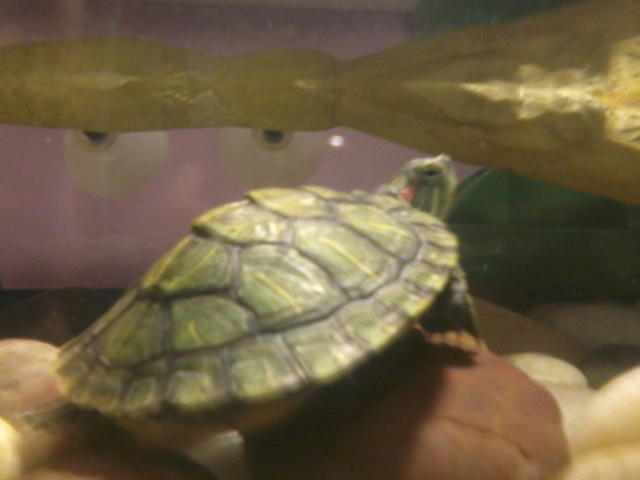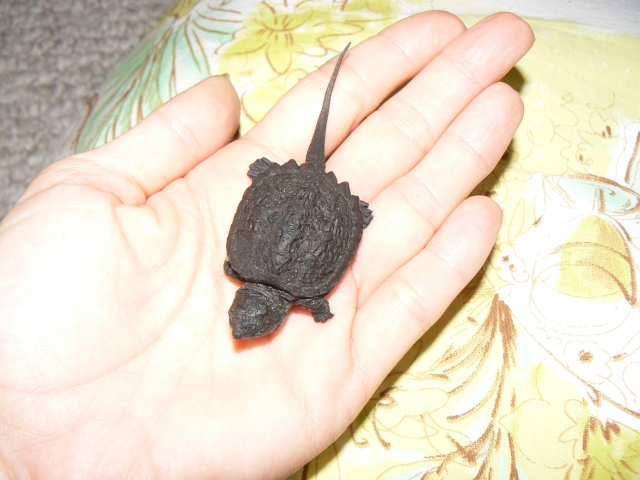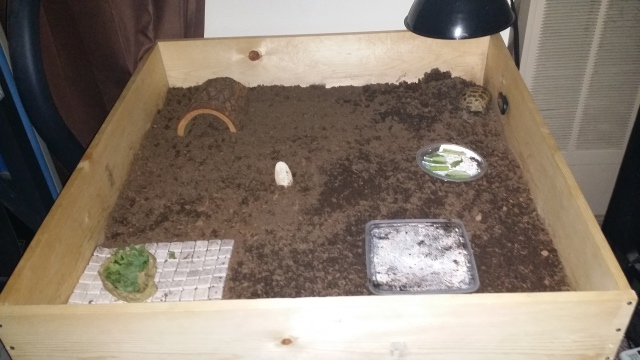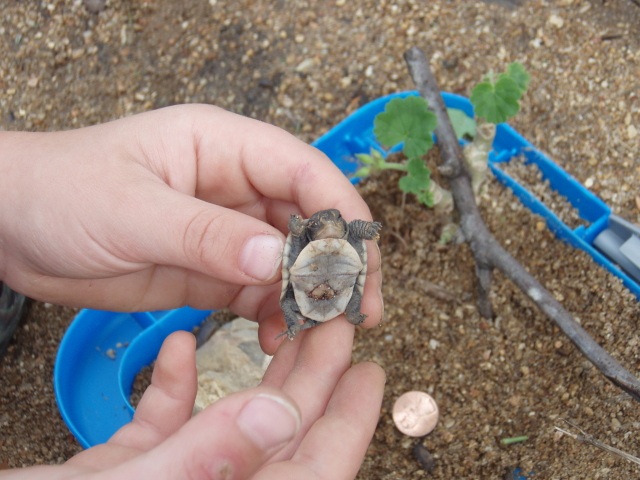QuestionHi Mark, I bought a "recued" turtle. Someone let him go and he wandered in a parking lot for a long time, until a friend finally picked him up and brought him to me. He has problems and that is where I need your help. His shell is dark brown and it has pitts in it and it is very dry at the ends. I am afraid the edges are going to crack off. He eats greens but no fruit and his shell is so thick at the edges that he can barely move his neck from side to side. I need all the help I can get to bring him into good health. I think he is a box turtle. His shell is high in the center and he has a convex shell on the bottom. I names him Merlin. Please help anyway you can. Thank you.
AnswerOK, to help with your identification, and with general turtle-related things, my favorite website is www.tortoise.org.
Let's assume for now that it IS a box turtle. The shell sounds like she (and with a convex belly (plastron) it is probably a female, but this does not work real well with boxies) is having some dietary problems. The good news is that they can be easy to fix. The bad news is it takes a while to look better- sometimes a LONG while.
For right now, lets not worry about the thickness of the shell, etc. When we get her back to good health, we can deal with that.
Science lesson: Turtles need a balanced diet- like we all do, BUT they have a special need for a balance of calcium and phosphorus. Many foods are terribly unbalanced and hurtful- shell deformities are a common result. It is not vital that each meal be perfectly balanced, but the general trend should be. A variety of foods is the key- avoid hamburger and iceberg/head lettuce, use crickets, and SuperWorms (soft-skinned mealworms) [Note- boxies are MOSTLY insect eaters in the wild!].
The California Turtle and Tortoise Club site mentioned earlier has good info on general boxie care, AND they have links to some great boxie websites that can help you in more detail. One good one, for example, is http://www.boxturtlesite.org/
This won't be easy or very fun. In all honesty, my absolute BEST advice is to try to take care of her over the winter, then release her in an appropriate setting in the spring. By appropriate, I mean a nice wooded area near some farms where she can find the sort of food, shelter, etc. she needs on her own.
I would NOT let her out somewhere were there are known ot be other wild boxies, however because she has probably picked up some parasites and illnesses from whoever had her before and we don't want those to spread ot the healthy wild boxies.
On the other hand- if you are ready and willing for the cost and trouble of a pet that is really, truely NOT that easy to care for, then boxies can be a lot of fun to have!

 what kind of turtle/tortoise do i have?
Question
my turtle
i have no idea what kind of turtle/t
what kind of turtle/tortoise do i have?
Question
my turtle
i have no idea what kind of turtle/t
 Pinkish worms in my red eared sliders stool
Question
My red eared slider
So just two days ago i saw
Pinkish worms in my red eared sliders stool
Question
My red eared slider
So just two days ago i saw
 hatchling snapper
Question
Whipper Snapper
hey mark... this site is great
hatchling snapper
Question
Whipper Snapper
hey mark... this site is great
 My new Russian Tortoise not eating
QuestionQUESTION: I purchased a Russian Tortoise from P
My new Russian Tortoise not eating
QuestionQUESTION: I purchased a Russian Tortoise from P
 we found a newlly hatched turtle
QuestionTurtle Belly
QUESTION: My son Ben found
we found a newlly hatched turtle
QuestionTurtle Belly
QUESTION: My son Ben found